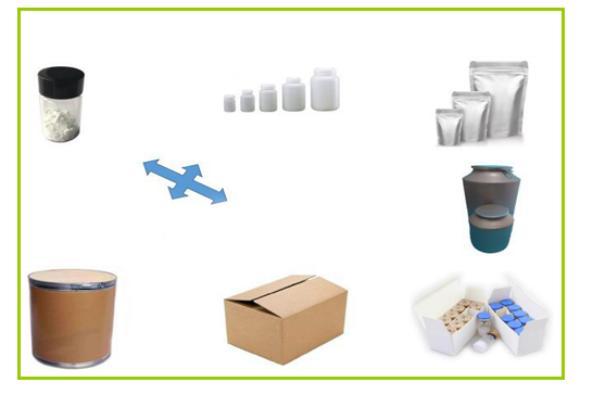Specification
| Characteristics | White crystals or crystalline powder, Odorless |
| Solubility | Freely soluble in Water and in Glacial acetic acid, practically insoluble in Alcohol (96%) and Acetone |
Identification |
IR, should comply with Tranexamic acid CRS
|
| pH | 7.0-8.0 |
| Heavy metals | ≤10ppm |
Purity | 99%~101% |
Welcome to contact us to get complete COA.
What is Tranexamic Acid?
Tranexamic acid is a synthetic antifibrinolytic agent used to prevent and treat excessive bleeding. It works by inhibiting the breakdown of fibrin clots, thereby stabilizing blood clots and reducing bleeding. Tranexamic acid is commonly used in various medical fields, including surgery, trauma, and obstetrics.
Chemical Structure and Properties
Chemical Formula: C8H15NO2
Molecular Weight: 157.21 g/mol
Appearance: White crystalline powder
Solubility: Soluble in water; slightly soluble in ethanol
Mechanism of Action
Tranexamic acid works by blocking the lysine binding sites on plasminogen and plasmin. This inhibition prevents the activation of plasminogen to plasmin, an enzyme that degrades fibrin clots. By doing so, tranexamic acid helps to stabilize formed clots and reduces bleeding.
Applications of Tranexamic Acid
1. Medical Applications
Surgical Procedures
Preoperative and Postoperative Use: Administered before and after surgeries, such as cardiac, orthopedic, and dental surgeries, to reduce bleeding and the need for blood transfusions.
Orthopedic Surgery: Widely used in joint replacement surgeries to minimize blood loss.
Trauma and Emergency Situations
Obstetrics and Gynecology
Dental Procedures
Hereditary Angioedema
2. Other Potential Applications
Antifibrinolytic Therapy
Chronic Conditions: May be used in conditions where chronic bleeding is a concern, such as in certain types of cancers or gastrointestinal bleeding.
Epistaxis (Nosebleeds): Used to treat recurrent nosebleeds, particularly in patients with bleeding disorders.
Benefits of Tranexamic Acid
Effective Bleeding Control: Reduces the need for blood transfusions and stabilizes clots effectively.
Versatile Use: Applicable in various medical scenarios, including surgeries, trauma care, and treatment of bleeding disorders.
Rapid Action: Quickly inhibits fibrinolysis, making it suitable for emergency situations.
Side Effects
Common Side Effects: Nausea, vomiting, diarrhea, and muscle pain.
Serious Side Effects: Rare but may include thromboembolic events (e.g., deep vein thrombosis, pulmonary embolism), seizures, visual disturbances, and allergic reactions.
Dosage and Administration
Dosage: The dosage varies depending on the condition being treated and can be administered orally, intravenously, or topically.
Monitoring: Patients receiving tranexamic acid should be monitored for signs of thrombosis, especially in individuals with a history of thromboembolic disease.
Package

Shipping

Company informations

Contact information